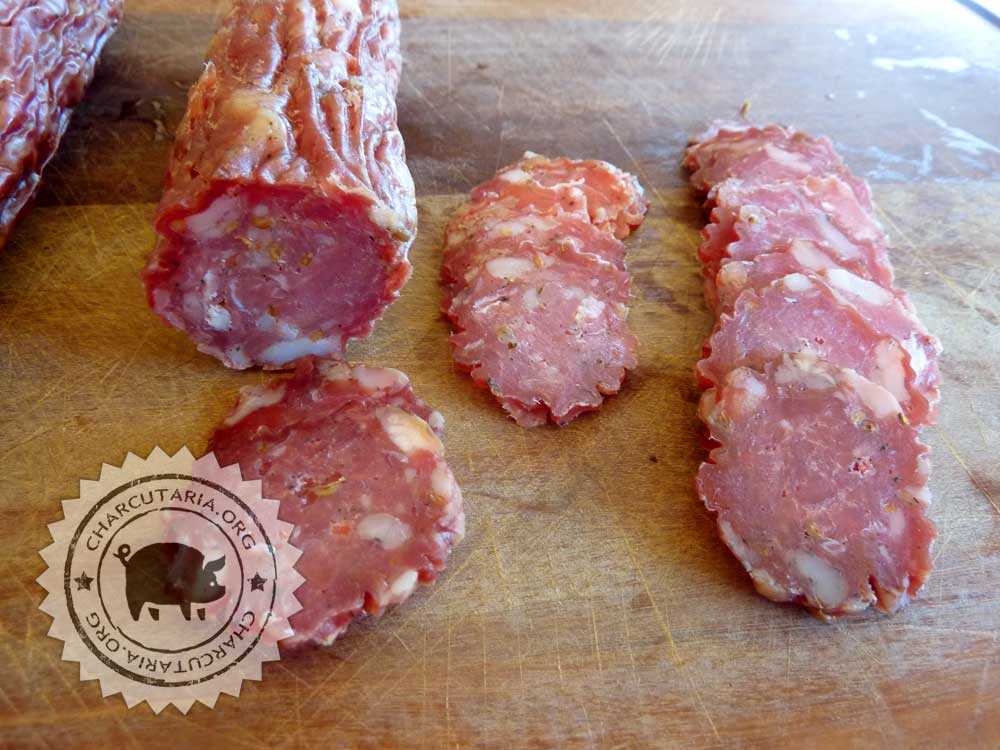
Essa é uma receita italiana da região de Provenance, ilha de Sardenha. Sardenha é uma ilha paradisíaca do mar mediterrâneo que, além de suas belezas naturais, nos presenteou com um salame confeccionado artesanalmente utilizando a carne de cordeiro. A carne de cordeiro tem sabor acentuado, o que torna esse produto uma iguaria para aqueles que apreciam um sabor mais pronunciado da carne. O salame de Sardenha é originalmente curado por um período longo, cerca de 4 meses, por esse motivo assemelha-se com um presunto cru.
Ingredientes do Salame de Sardenha
Carnes
- Pernil de cordeiro – 90% – 1500g;
- Toucinho/Barriga suína – 10% – 150g;
Condimentos e aditivos
- Sal – 2% – 33g;
- Açúcar – 1% – 16g;
- Antioxidante (com eritorbato de sódio) – 0,24% – 4g;
- Sal de cura 2 (6% de nitrito, 3% de nitrato e 93,75% de sal) – 0,24% – 4g;
- Erva doce em grãos – 7g;
- Alho granulado desidratado – 7g;
- Pimenta do reino moída – 4g;
- Cultura starter (bactérias láticas) – um ponta de colher de café diluída em 100ml de água filtrada;
- Vinho tinto – 50ml.
Preparo do salame de Cordeiro da Ilha de Sardenha
Moer em disco fino as carnes e dois terços gordura;
Picar 1 terço da gordura em cubos pequenos(meio cm) para ficar aparente no salame. Essa gordura é decorativa e, caso não queira pedaços de gordura aparentes no salame, moa junto com a carne.
Misturar bem todos os ingredientes até que a massa do salame fique pegajosa. Aproximadamente 2 minutos. Pode misturar com as mãos, utilizando uma batedeira orbital ou amassadeira.
Embutir em tripa de colágeno ou bovina natural reta calibre entre 45mm e 60mm, dependendo da espessura desejada no salame. Neste caso utilizei a tripa de colágeno calibre 45mm.
Faça furos com um alfinete/agulha ou pricker para remover bolhas de ar que ficaram presas entre a tripa e a massa do salame. As bolhas de ar oxidam a gordura e criam regiões com coloração diferente e gosto de ranço, por isso é preciso removê-las.
Pese cada salame e anote o peso inicial.
Pendure o salame em um ambiente com temperatura entre 12ºC e 15ºC com a umidade relativa do ar perto de 80%.
Não há necessidade de fermentação pois o vinho funciona como acidulante. A fermentação no salame gera ácido lático e protege pela acidificação. A cultura starter agrega sabor e aroma pela ação enzimática fundamental na formação e estabilidade de cor do produto final. A cultura starter também possui atividade lipolítica e proteolítica, envolvidas na formação de aroma.
Deixe pendurado até que o salame tenha perdido entre 35% e 40% do peso inicial.
Perda de peso dos salames
SALAME 1
peso inicial: 363g
peso final: 202g
perda: 45%
SALAME 2
peso inicial: 316g
peso final: 173g
perda: 45%
SALAME 3
peso inicial: 333g
peso final: 177g
perda: 47%
SALAME 4
peso inicial: 315g
peso final: 168g
perda: 47%
SALAME 5
peso inicial: 182g
peso final: 101g
perda: 45%;

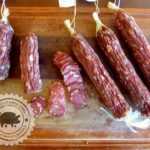
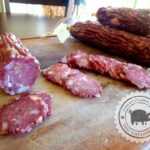
-
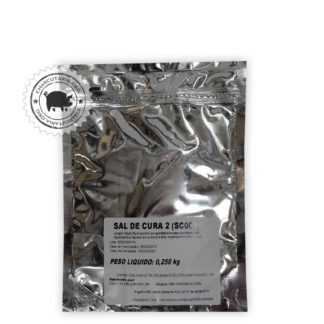 Sal de cura 2R$ 8,00
Sal de cura 2R$ 8,00 -
 Sal de cura 1R$ 8,00
Sal de cura 1R$ 8,00 -
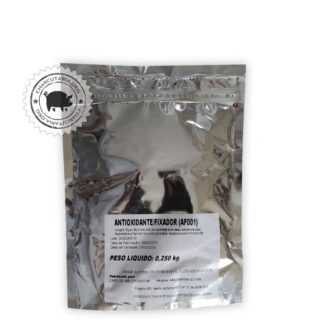 Antioxidante FixadorR$ 23,00
Antioxidante FixadorR$ 23,00 -
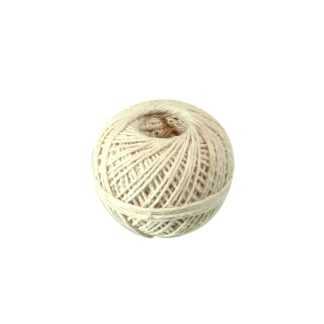 Barbante culinárioR$ 7,90
Barbante culinárioR$ 7,90 -
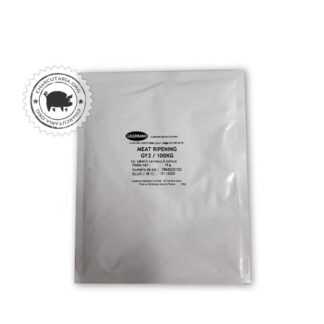 Cultura StarterO preço original era: R$ 69,90.R$ 59,90O preço atual é: R$ 59,90.
Cultura StarterO preço original era: R$ 69,90.R$ 59,90O preço atual é: R$ 59,90. -
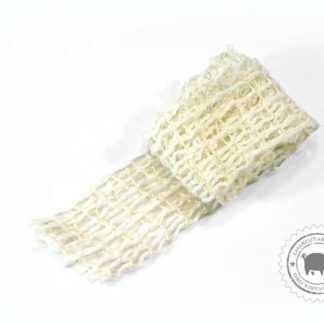 Rede elástica culinária 50mmR$ 15,00
Rede elástica culinária 50mmR$ 15,00 -
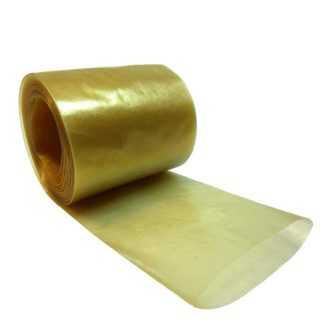 Tripa de colágeno 45mm rolo 5 metros salameR$ 25,00
Tripa de colágeno 45mm rolo 5 metros salameR$ 25,00 -
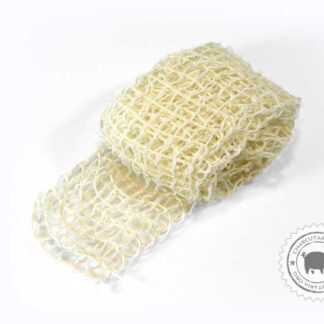 Rede elástica culinária 65mmR$ 18,00
Rede elástica culinária 65mmR$ 18,00 -
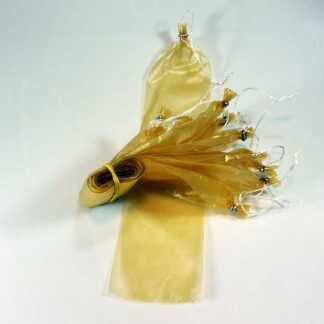 Tripa de colágeno salame 45mm 10 unidades amarradasR$ 22,00
Tripa de colágeno salame 45mm 10 unidades amarradasR$ 22,00 -
 Tripa de colágeno 80mm copa e salameR$ 29,90
Tripa de colágeno 80mm copa e salameR$ 29,90 -
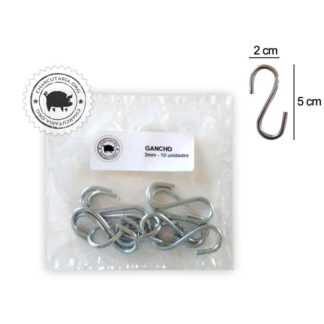 Gancho GalvanizadoR$ 12,00
Gancho GalvanizadoR$ 12,00 -
 Tripa de colágeno salame 50mm 10 unidades amarradasR$ 24,00
Tripa de colágeno salame 50mm 10 unidades amarradasR$ 24,00


Olá você deixou os 4 meses maturando?
Ficou por volta de 30 dias perdendo peso/maturando.
Eduardo, qual vinho tinto você utiliza, seco ou suave? Outra coisa, como consigo/construo um ambiente com 15 graus e 80% de umidade?
Uso o vinho que estiver disponível, sem regra para isso. Com relação à umidade e temperatura a maioria adapta um frigobar ou geladeira antiga com um controlador tipo “full gauge”, que liga e desliga a refrigeração e um umidificador acoplano dentro da geladeira. Também pode usar uma adega de vinhos que já vem com controle de temperatura. A umidade neste caso pode elevar usando potes com água no fundo da adega.
Boa noite Eduardo, na receita está descrito para moer com disco fino mas no vídeo vc moeu com disco grosso? Outra dúvida? Devo usar a cultura ? Obrigada!
Para o salame a espessura do disco não vai fazer tanta diferença. O disco fino vai facilitar a mistura e liga, mas no disco mais largo vai funcionar também. Caso queira um produto com mais qualidade faça uso da cultura sim, ela vai ajudar no sabor, aroma, e proteção. Caso faça sem a cultura starter acrescente um pouco de vinho para ajudar na proteção(acidificação). Abraços!
Posso usar Yakult no lugar do starter?
É possível fazer sim, o leite fermentado(yakult) vai acidificar e proteger, mas não vai agregar outros benefícios. Costumo fazer ou sem fermentar com um pouco de vinho ou uso uma boa cultura starter, com uma variedade de bactérias que traga vários benefícios. Já usei o yakult mas neste caso como só vai acidificar então acho mais fácil usar o vinho e pular a fermentação.
Fiz uma receita sua com Yakult e o salame ficou muito bom. Deixei um dia e meio na temperatura ambiente. Levou trinta dias maturando no frigobar com uma ventoinha adaptada, perdeu 35% de peso. Nesse tempo, observei uma finíssima camada (quase imperceptível) de mofo branco que começou aparecer. Eu queria comprar o starter de vcs, mas tenho medo de estragar. Moro no interior do Rio de Janeiro.
O ideal é aplicar o mofo, mas se essa camada de mofo for bem branquinha e fina, tipo um pó, então provavelmente é o mofo inofensivo. Com 35% de perda o salame ainda fica bem macio. Se quiser ele mais firme deixe até perder 45%, fica bem mais firme. As culturas aguentam 15 dias fora do congelador, dependendo do frete elas chegam sem problemas. Mas de qualquer forma pode fazer sem. Um grande abraço!